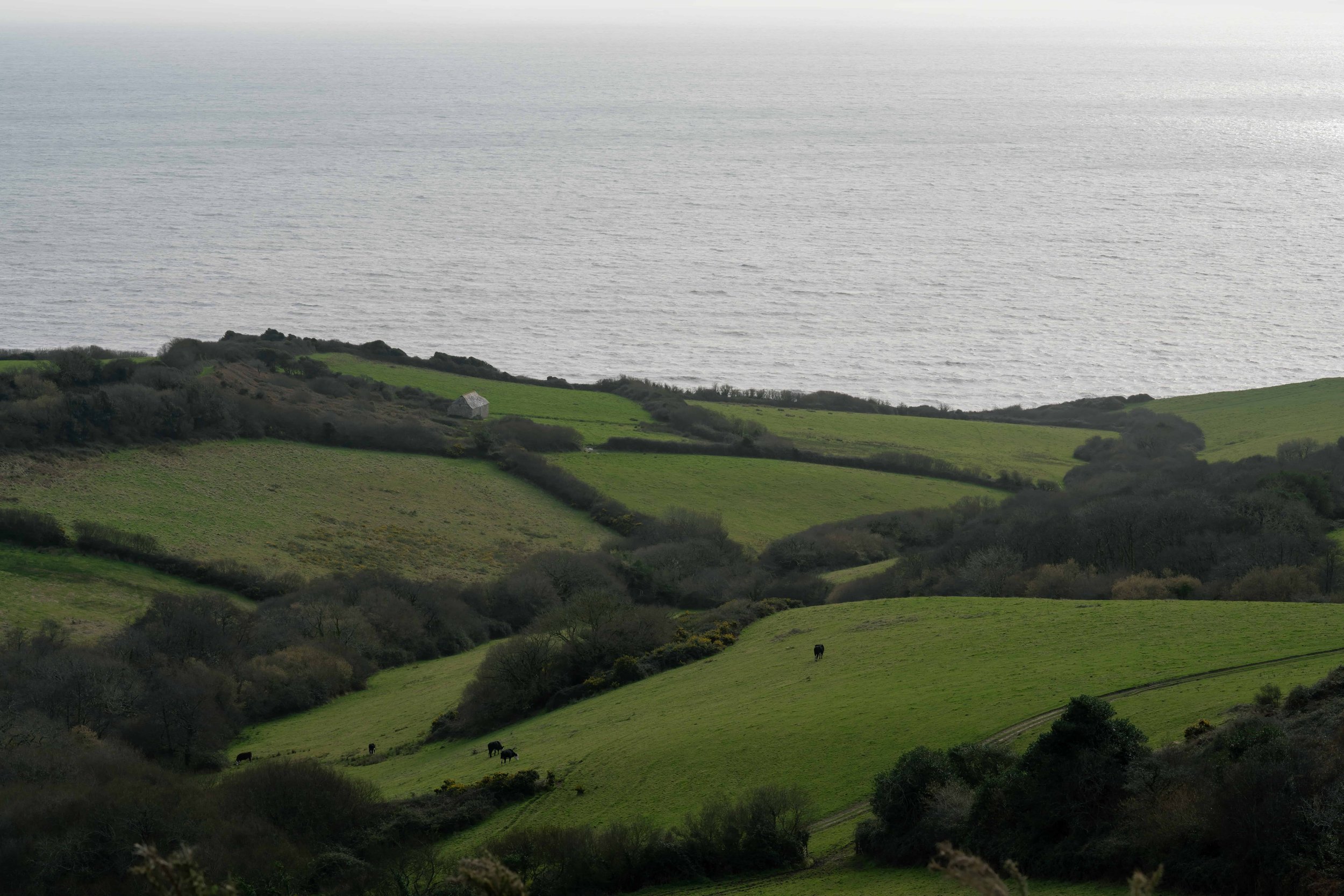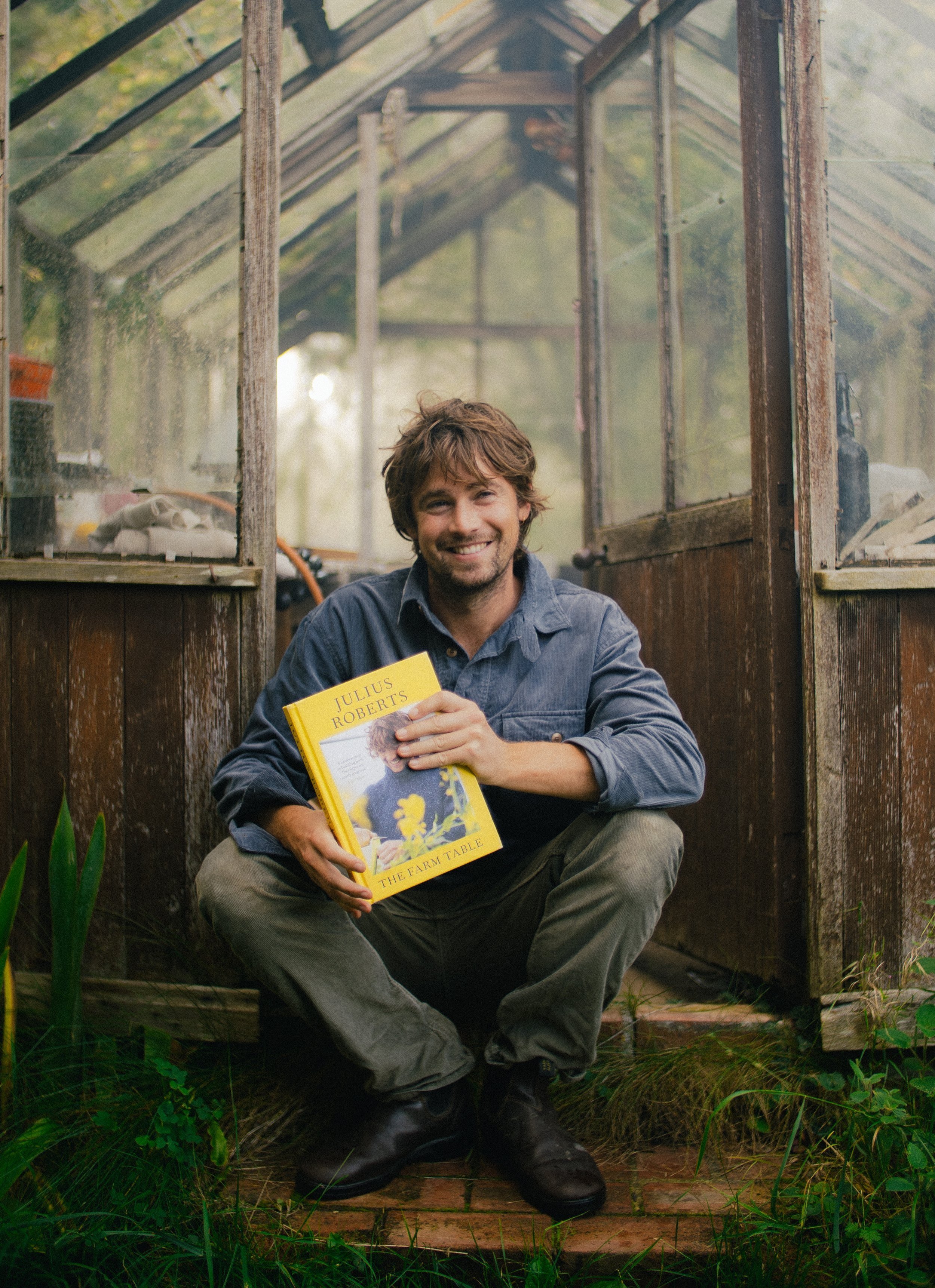
The hill we live on lies in a hidden
valley shaped like a teardrop bowl.
The farm is impossibly steep and wild at the edges, entangled in a patchwork of rambly hedgerows, thorny scrub and thick swathes of gorse. The house sits at the bottom of the hill, surrounded by a protective cluster of trees: a few mighty oaks, a weeping willow and a tousled orchard of gnarled, lichen- covered apple, plum and quince trees.
A disheveled ha-ha (a steep ditch that separates a garden lawn from grazing land), supposed to stop sheep jumping into the garden, now provides a rather useful home for great crested newts and a stepladder for the sheep, who climb the garden wall at dawn and nibble at the flowers. Beyond this is a cluster of small fields enclosed by a wonderful network of hedgerows and woodland. The lady who lived here before us was a fierce guardian of nature, enlisting the farm under a stewardship scheme with the local wildlife trust. No chemicals or artificial fertilisers have been used on the fields for over thirty years.
There have been 160 species recorded, and the meadows provide vital habitat for an array of insects, birds, foxes, voles and much more. At night, owls hoot from every corner of the farm, where she planted 2,000 trees that have now matured into broadleaf woodland, home to woodcock, woodpeckers, hawks, buzzards, badgers and a nightjar. It is a special place, and from the higher fields you look across the vale, through a tapestry of farms, to where the sea can be glimpsed between the hills of the coast. We aim to build on her legacy.
The land around us is generally home to quite intensive dairy farming, which tends to squeeze nature right to the edges, leaving little habitat for much else. Here we aim to provide a sanctuary for nature, an oasis in the desert, while also growing food. We have seeded three further fields with diverse wildflower mixes in a meadow restoration project, and will plant more trees in a bid to create an increasingly rare dynamic habitat called woodland pasture. This will provide a home for many species as well as grazing for my animals and drought resistance.
My flock are all rare primitive breeds that are much smaller and slower-growing than modern breeds. They have less impact on the land, as they need little to survive, and live in harmony with nature rather than competing with it. We keep them in small numbers, rotated carefully around the fields so that the wildflower can bloom for as long as possible and set its seeds. At which point my sheep and goats trample and spread those seeds into the ground, holding back the grass over winter so the wildflower has the best chance when it grows again in spring.
It might look a bit dreamy from afar, and a lot of the time it is.
On a good day this is an extraordinary way of life, waking with the sun, your day dictated by the seasons, out there in the elements, at one with nature. Even on a bad day, there’s a real truth to it all, a beauty in the hard moments. Nature is tough and unforgiving. But it’s also me trimming hundreds of toenails in the mud and driving rain, delivering kid goats and lambs in spring, getting my hands in when they are breached and need pulling out. It’s me on the sad days when births go wrong or an infection spreads its way through the flock or, even worse, betrayal day at the abattoir. This hasn’t all just puffed out of nowhere, it’s been a slow journey of eight years, building the farm and its elements little by little, learning on the fly through a series of setbacks and hard-won lessons. I’ve had some brilliant advice along the way and met some fantastic mentors, but really the most important things I’ve learnt have been through some pretty brutal mistakes.
I used to do this all by myself with occasional help from family and friends catching this or weeding that, roping in my brothers in exchange for chicken pies and ham hock stews. But things have now grown to a point where I need an extra pair of hands, and my brother Joss works with me on the farm as my right-hand man.
He does much of the vegetable growing and hay-rack filling and is a master at catching lusty billy goats at all hours when they lock on to the smell of the girls in autumn. The ten goats I started with are now forty, a rare breed called the British primitive goat that I keep for conservation purposes and a love for this brilliantly curious and characterful animal. My flock of eleven Hebridean sheep is now one hundred . . . with thirty breeding ewes that give birth to about fifty lambs each year, and this will be the main source of income for our small farm. As I said, they are a slow-growing heritage breed, so I keep these lambs for about fifteen months (compared to the four-to-six-month life of commercially reared lambs), rotating them through our permanent pasture before they get sold directly to friends, family and local butchers as hogget.
The abattoir always says it’ll get easier, you’ll get used to it . . . but I never will and never want to. I have a deep connection and love for my animals, and that day, taking them in, weighs on me for weeks before and after. It feels the utmost betrayal and I often teeter on the edge. But it is also a great privilege to know where your food comes from and the true price of it: the hours of care and careful husbandry, the relationship with the land from whence they came and the moral cost of death and what that really means.
Nothing is certain in life, but
the one thing I know is that I love
being rooted to the seasons and
feeling connected to nature.
Extract taken from The Farm Table (Ebury Press, 2023)
THE FARM TABLE: The Sunday Times Bestseller





